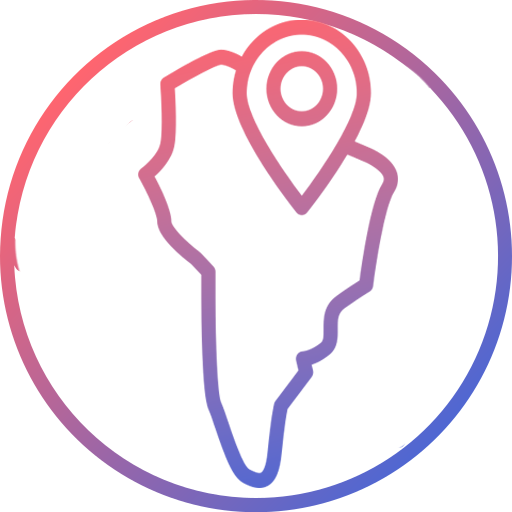Frequently Asked Questions
eSIM coverage in remote or rural areas: What to expect
Discover what to expect from eSIM coverage in remote or rural areas. Learn about factors influencing connectivity, best practices, and how to prepare for limited network access.
Traveling to remote or rural areas often comes with connectivity challenges. While eSIM technology offers convenience and flexibility, network coverage in less populated regions can vary significantly. This guide explores what to expect from eSIM coverage in remote areas, factors that affect connectivity, and strategies for staying connected when coverage is limited.
1. Why eSIM Coverage Differs in Remote Areas
A. Sparse Network Infrastructure
Remote areas typically have fewer cell towers, resulting in weaker signals and slower data speeds.
- Example:
National parks in the U.S. or rural regions of Africa may have limited cell towers, impacting eSIM performance.
B. Dependence on Local Carrier Partnerships
eSIM providers rely on local carrier networks to provide coverage. If the provider doesn’t partner with carriers in remote regions, connectivity may be limited.
- Example Providers:
- Airalo: Offers strong partnerships in over 190 countries.
- Nomad: Focuses on multi-regional plans but may lack coverage in certain rural areas.
C. Frequency Band Compatibility
Devices must support the frequency bands used by carriers in remote areas to maintain connectivity.
- Example:
Some U.S.-based devices may lack compatibility with bands used in Southeast Asia’s rural regions.
2. What to Expect from eSIM Coverage in Remote Areas
A. Reduced Data Speeds
Even if coverage exists, data speeds in remote areas may be slower due to older network infrastructure (e.g., 3G instead of 4G or 5G).
B. Intermittent Connectivity
You may experience frequent signal drops or dead zones in regions with limited cell towers.
C. Variable Coverage Quality
Coverage can vary significantly between eSIM providers based on their partnerships with local carriers.
Tip: Research provider-specific coverage maps to gauge expected performance in remote areas.
3. Preparing for Limited eSIM Coverage in Remote Areas
A. Research Coverage Before Travel
Check if your eSIM provider offers coverage in your destination by reviewing coverage maps or contacting customer support.
- Steps to Check Coverage:
- Visit your eSIM provider’s website or app.
- Search for your destination or region.
- Look for specific carrier partnerships.
B. Download Offline Resources
Save essential apps and files for offline use, including:
- Maps and navigation tools (e.g., Google Maps offline mode).
- Travel guides and itineraries.
- Language translation apps.
C. Carry Backup Connectivity Options
For areas with no eSIM coverage, consider alternatives such as:
- Local SIM Cards: Buy a physical SIM card from a local carrier with better rural coverage.
- Portable Wi-Fi Hotspots: Devices like Skyroam or GlocalMe provide connectivity in remote areas via satellite or cellular networks.
- Satellite Phones: Ideal for remote expeditions where no cellular network exists.
D. Use Low-Data Settings
Optimize your device to conserve data and maintain connectivity in low-signal areas.
- Tips for Saving Data:
- Disable background app refresh.
- Use data-saving modes in apps like YouTube or Google Maps.
- Turn off auto-updates for apps.
4. Best eSIM Providers for Remote Coverage
A. Airalo
Known for extensive global partnerships, Airalo provides strong coverage in most countries but may have limitations in extremely remote areas.
B. Holafly
Offers unlimited data plans for popular destinations, ideal for travelers requiring consistent connectivity in rural regions.
C. Nomad
Focuses on regional plans that cater to travelers visiting multiple countries, with reasonable coverage in less populated areas.
5. Example Scenario: Using an eSIM in Rural Australia
Scenario:
A traveler exploring rural Australia needs connectivity for navigation and emergency contact.
- Steps Taken:
- Activates an Airalo eSIM plan partnered with Telstra, Australia’s largest carrier.
- Downloads offline maps and saves essential travel documents.
- Carries a portable Wi-Fi hotspot for backup in areas with no coverage.
Outcome:
The traveler enjoys reliable connectivity in most rural areas and leverages offline resources in dead zones.
6. Frequently Asked Questions
- Will my eSIM work in remote areas?
It depends on the provider’s partnerships with local carriers and the availability of network infrastructure in the region. - What should I do if my eSIM doesn’t work in a rural area?
Use offline resources, switch to a local SIM card, or rely on portable Wi-Fi hotspots. - Which eSIM provider is best for remote areas?
Providers like Airalo and Holafly often have better rural coverage due to their strong carrier partnerships.
Traveling to remote areas? Compare top eSIM providers and find plans with reliable coverage, even in the most secluded destinations—start exploring now!
Create new eSIM
Popular Destinations

Europe
Switzerland
